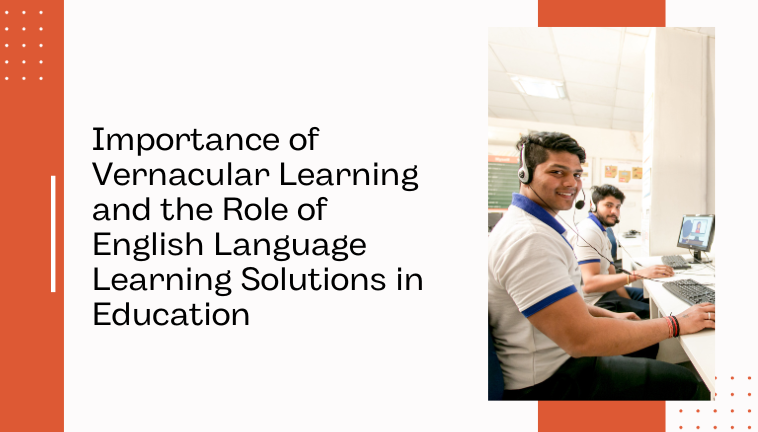Blogs
Importance of Vernacular Learning and the Role of English Language Learning Solutions in Education

While education is hailed as the great equalizer in theory, its practical implementation often leans towards English language instruction, presenting challenges for non-English speakers in countries like India. Vernacular learning emerges as a crucial solution, promising to bridge this gap and provide equitable education opportunities.
Why Encourage Vernacular Learning in Education?
Discussions around vernacular languages in education underscore their positive influence on learning outcomes, participation, and dropout rates. Studies confirm that early education in a student's mother tongue significantly enhances educational experiences. Vernacular learning not only promotes conceptual clarity, confidence, and social cohesion but also specifically benefits rural and economically disadvantaged students. The endorsement of vernacular languages in the NEP 2020 guidelines further emphasizes their role in promoting equality, accessibility, and inclusivity in education.
English Learning Solutions in the Post-Pandemic Digital Education Era
The Covid-19 pandemic accelerated digital education in India, exposing a significant gap in the availability of vernacular content. While urban private schools seamlessly transitioned to digital teaching, rural areas faced challenges due to the lack of vernacular content. To ensure equal access, it is imperative to make educational content available in vernacular languages.
Reports by Google India and HT Leadership Series highlight the growing preference for vernacular content among internet users, especially in rural areas. Recognizing this demand-supply gap, Schoolnet addresses the issue by providing vernacular content on Geneo, a personalized learning app. Schoolnet's efforts synchronize in-school and after-school education using innovative technology. Their multimedia content, delivered through KYAN in schools and Geneo for students, aligns with prescribed syllabi while allowing personalized learning experiences. Explore more about Schoolnet's contributions in this space here.
Integration of English Language Learning Solutions
In catering to diverse language needs, the integration of English language learning solutions becomes pivotal for employability and skill development. By emphasizing both vernacular and English language learning solutions, we can effectively bridge educational gaps, ensuring a more inclusive and empowering education system.




